 by our College Data Analytics Team
by our College Data Analytics TeamNEC total enrollment is approximately 4,483 students. 1,644 are undergraduates and 2,455 are graduate students.
Male/Female Breakdown of Undergraduates
The full-time NEC undergraduate population is made up of 58% women, and 42% men.
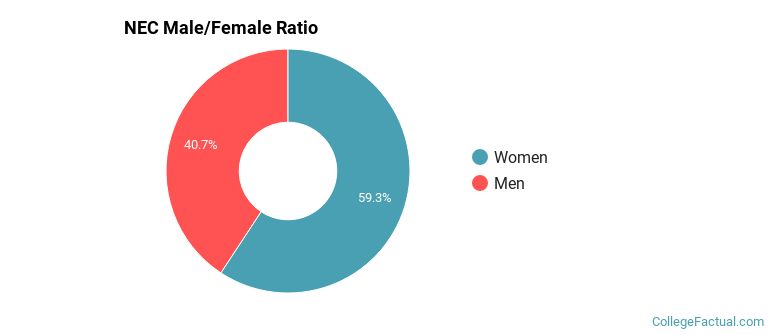
For the gender breakdown for all students, go here.
NEC Racial/Ethnic Breakdown of Undergraduates

| Race/Ethnicity | Number |
|---|---|
| White | 813 |
| Black or African American | 306 |
| Unknown | 233 |
| Hispanic | 165 |
| Multi-Ethnic | 51 |
| International | 40 |
| Asian | 23 |
| Native Hawaiian or Pacific Islander | 2 |
See racial/ethnic breakdown for all students.
Male/Female Breakdown of Graduate Students
About 30% of full-time grad students are women, and 70% men.
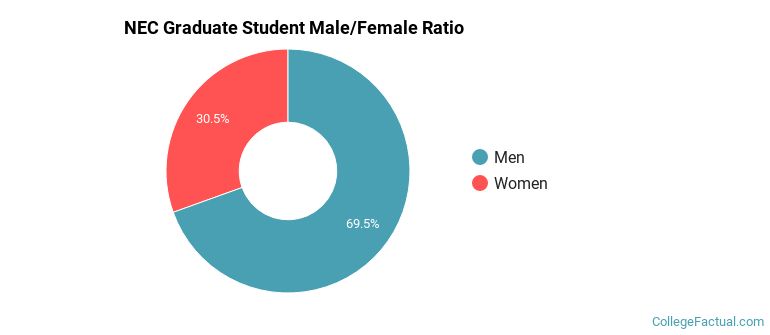
For the gender breakdown for all students, go here.
NEC Racial-Ethnic Breakdown of Graduate Students
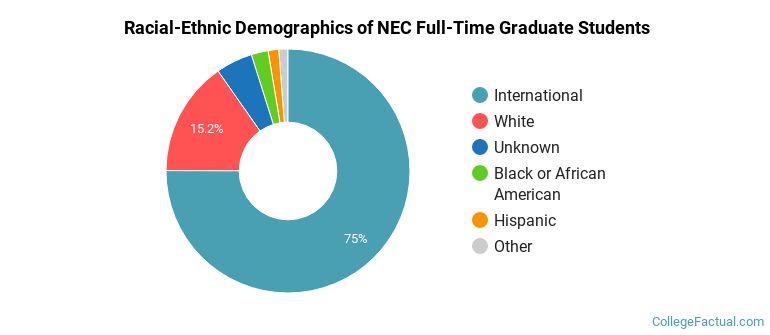
| Race/Ethnicity | Number |
|---|---|
| International | 2,043 |
| White | 270 |
| Unknown | 60 |
| Black or African American | 34 |
| Hispanic | 28 |
| Asian | 10 |
| Multi-Ethnic | 9 |
| Native Hawaiian or Pacific Islander | 0 |
See racial/ethnic breakdown for all students.
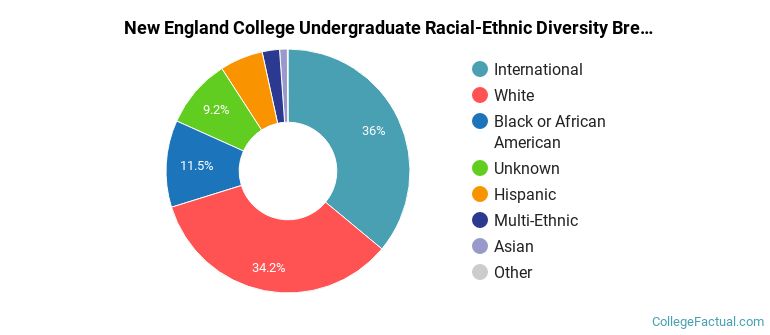
| Race/Ethnicity | Number |
|---|---|
| International | 2,230 |
| White | 1,231 |
| Black or African American | 362 |
| Unknown | 334 |
| Hispanic | 206 |
| Multi-Ethnic | 69 |
| Asian | 34 |
| Native Hawaiian or Pacific Islander | 3 |

There are approximately 1,884 female students and 2,599 male students at NEC.
NEC ranks 243 out of 2,183 when it comes to geographic diversity.
74.71% of NEC students come from out of state, and 1.45% come from out of the country.

The undergraduate student body is split among 31 states (may include Washington D.C.). Click on the map for more detail.
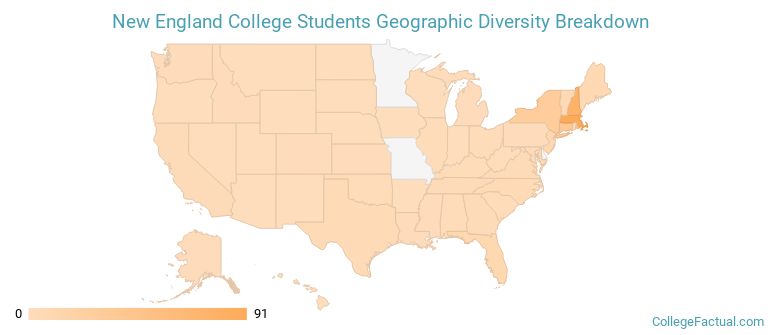
| State | Amount |
|---|---|
| Massachusetts | 91 |
| New Hampshire | 77 |
| Connecticut | 38 |
| New York | 30 |
| Florida | 10 |
Students from 30 countries are represented at this school, with the majority of the international students coming from India, Japan, and China.
Learn more about international students at NEC.
A traditional college student is defined as being between the ages of 18-21. At NEC, 31.46% of students fall into that category, compared to the national average of 60%.
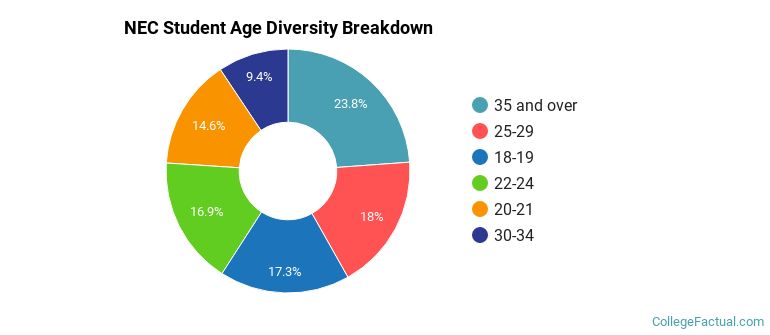
| Student Age Group | Amount |
|---|---|
| 35 and over | 667 |
| 25-29 | 503 |
| 18-19 | 483 |
| 22-24 | 474 |
| 20-21 | 408 |
| 30-34 | 262 |
| Under 18 | 0 |
Footnotes
*The racial-ethnic minorities count is calculated by taking the total number of students and subtracting white students, international students, and students whose race/ethnicity was unknown. This number is then divided by the total number of students at the school to obtain the racial-ethnic minorities percentage.
References
Department of Homeland Security Citizenship and Immigration Services
Image Credit: By WikiReminder77 under License